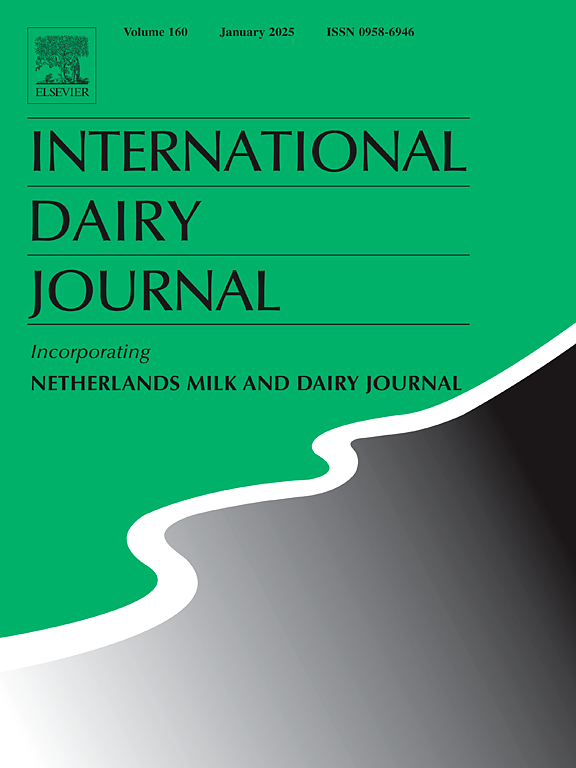Enhancing milk kefir grain biomass: Effects of glucose, whey concentrate, and acetate buffer on metabolic activity and microbial diversity analyzed through metataxonomics
IF 3.4
3区 农林科学
Q2 FOOD SCIENCE & TECHNOLOGY
引用次数: 0
Abstract
This study evaluated the use of glucose (GL, 1 and 3 % w/v), concentrated whey protein (CWP, 1 and 3 % w/v) and acetate buffer (AB, 0.04 and 0.12 mol.L−1) on the metabolic activity, biomass growth and microbiota composition of milk kefir grain. The use of acetate buffer ensured a slight decrease in pH during the 48 h of fermentation. The variation in acidity between treatments ranged from 0.65 to 1.11 g lactic acid/100 mL. The optimized substrate consisted of 3 % (w/v) of GL and CWP and 0.04 mol.L−1 of AB, resulting in the most pronounced increase in the biomass (51.43 %). The linear relationship between the parameters of total solids, acidity and pH was very strong (r ≥ 0.98). The initial composition of the grain microbiota included Lactobacillus sp., Saccharomyces sp. and Kluyveromyces marxianus. The supplementation strategies discussed represent a promising approach to enhance biomass production of kefir grains for both consumers and industry.
提高牛奶开菲尔颗粒生物量:葡萄糖、乳清精和醋酸缓冲液对代谢活性和微生物多样性的影响
本研究评价了葡萄糖(GL, 1和3% w/v)、浓缩乳清蛋白(CWP, 1和3% w/v)和醋酸缓冲液(AB, 0.04和0.12 mol.L−1)对乳开非尔颗粒代谢活性、生物量生长和微生物群组成的影响。醋酸缓冲液的使用保证了48 h发酵过程中pH值的轻微下降。酸度变化范围为0.65 ~ 1.11 g乳酸/100 mL。优化后的底物为3% (w/v)的GL和CWP, 0.04 mol.L−1的AB,生物量增加最为显著(51.43%)。总固形物、酸度和pH之间的线性关系非常强(r≥0.98)。谷物微生物群的初始组成包括乳杆菌、酵母菌和马氏克鲁维菌。所讨论的补充策略为消费者和工业提供了一种有希望的方法来提高开菲尔谷物的生物量生产。
本文章由计算机程序翻译,如有差异,请以英文原文为准。
求助全文
约1分钟内获得全文
求助全文
来源期刊

International Dairy Journal
工程技术-食品科技
CiteScore
6.50
自引率
9.70%
发文量
200
审稿时长
49 days
期刊介绍:
The International Dairy Journal publishes significant advancements in dairy science and technology in the form of research articles and critical reviews that are of relevance to the broader international dairy community. Within this scope, research on the science and technology of milk and dairy products and the nutritional and health aspects of dairy foods are included; the journal pays particular attention to applied research and its interface with the dairy industry.
The journal''s coverage includes the following, where directly applicable to dairy science and technology:
• Chemistry and physico-chemical properties of milk constituents
• Microbiology, food safety, enzymology, biotechnology
• Processing and engineering
• Emulsion science, food structure, and texture
• Raw material quality and effect on relevant products
• Flavour and off-flavour development
• Technological functionality and applications of dairy ingredients
• Sensory and consumer sciences
• Nutrition and substantiation of human health implications of milk components or dairy products
International Dairy Journal does not publish papers related to milk production, animal health and other aspects of on-farm milk production unless there is a clear relationship to dairy technology, human health or final product quality.
 求助内容:
求助内容: 应助结果提醒方式:
应助结果提醒方式:


